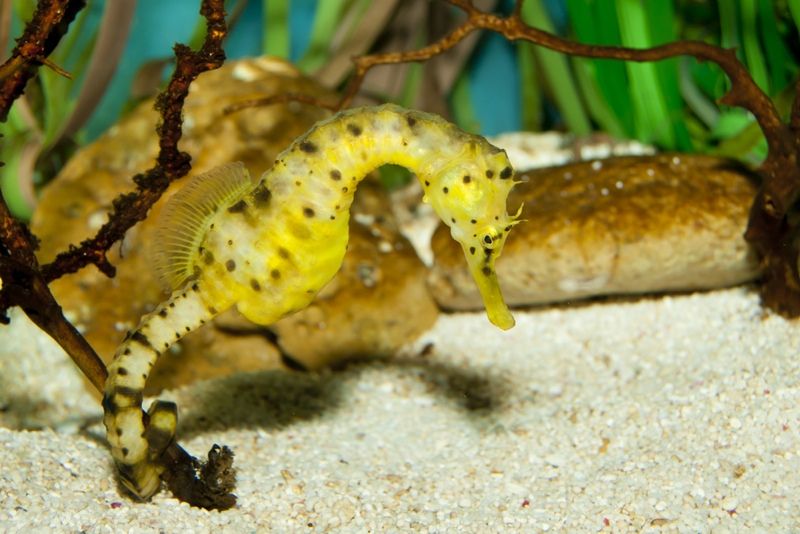Whoa! Seahorses Don't Neigh — They Growl
Seahorses don't neigh, but they do click when feeding or courting and growl when under threat, new research finds.

Dogs and bears aren't the only animals that give off warning growls. Seahorses do too.
For the first time, researchers have recorded seahorses growling, a tiny, deep sound not easily detectable by the human ear. These distinctive little fishes growl in response to stress, specifically the stress of being captured and handled, according to a new study published online June 26 in the Journal of Zoology.
Researchers and aquarium enthusiasts have long known that seahorses often vibrate angrily when handled, said study researcher Tacyana Oliveira, a scientist at Universidade Estadual da Paraíba, in Brazil. [Listen to the Seahorse Growls and Grunts]
"There are many people that mentioned the seahorses make these vibrations, but nobody actually did the experiments and the recordings to check that there were sounds," Oliveira told Live Science.
Many fish make sounds, though humans are rarely around to hear. A fish called the black drum makes a low booming sound as a mating call, for example, and clownfish chirp. Some fish vibrate their swim bladders to make sounds; others rub their bones together.
The sounds of seahorses have been little studied, Oliveira said, despite the fact that seahorses exhibit all sorts of intriguing behaviors, from complex courtships to male "gestation" (males of the species hold developing eggs in abdominal pouches).
She and her colleagues studied captive longsnout seahorses (Hippocampus reidi), a species found all along the eastern coast of North and South America, from Cape Hatteras, North Carolina, to Brazil. These delicate seahorses grow to be about 7 inches (18 cm) long and are usually colored yellow and orange.
Sign up for the Live Science daily newsletter now
Get the world’s most fascinating discoveries delivered straight to your inbox.
The researchers used underwater microphones called hydrophones to record the seahorses as they were transferred to new aquariums, during feeding, during courtship and while they were being grasped and held underwater.
Click and growl
The researchers found that seahorses make clicking sounds while feeding, and that they click even louder during courtship — especially on the third and final day of their intensive courtship process. Both males and females clicked, Oliveira said, which was a surprise.
"In fish, it's very typical that the males produce sounds during courtship, but not the females," she said.
Males clicked louder than females, perhaps as a way of showing off, Oliveira said, but both partners kept their courtship clicks relatively hushed, probably to prevent attracting predators.
Even more startling was the discovery that seahorses growl when captured. The sound is too quiet to serve as a warning to other seahorses, Oliveira said. More likely, the growl and vibration is a way to startle predators, perhaps just enough to get free.
Since the publication of the paper, Oliveira has gotten emails from other people who handle seahorses saying that other species also vibrate when captured. She suspects those species are growling, as well.
Follow Stephanie Pappas on Twitter and Google+. Follow us @livescience, Facebook & Google+. Original article on Live Science.

Stephanie Pappas is a contributing writer for Live Science, covering topics ranging from geoscience to archaeology to the human brain and behavior. She was previously a senior writer for Live Science but is now a freelancer based in Denver, Colorado, and regularly contributes to Scientific American and The Monitor, the monthly magazine of the American Psychological Association. Stephanie received a bachelor's degree in psychology from the University of South Carolina and a graduate certificate in science communication from the University of California, Santa Cruz.









